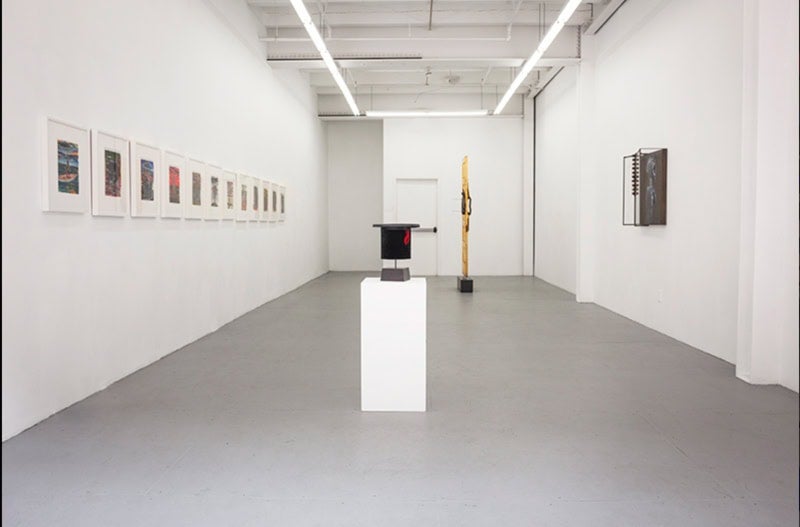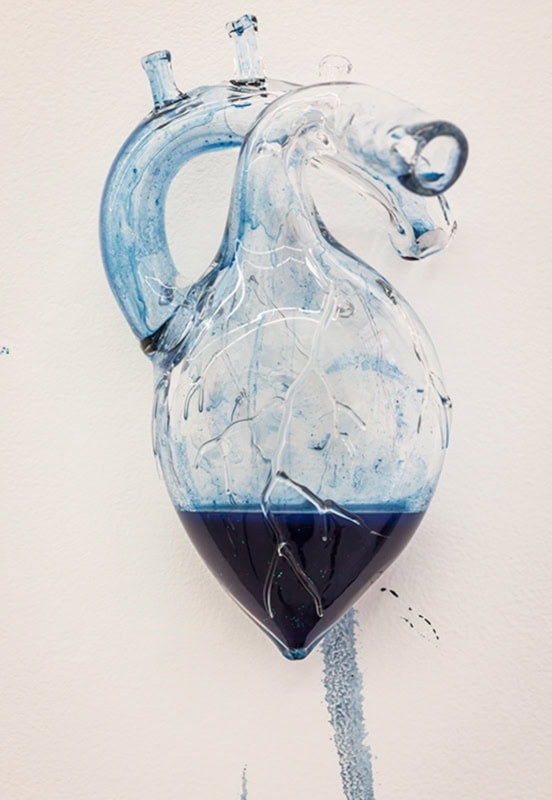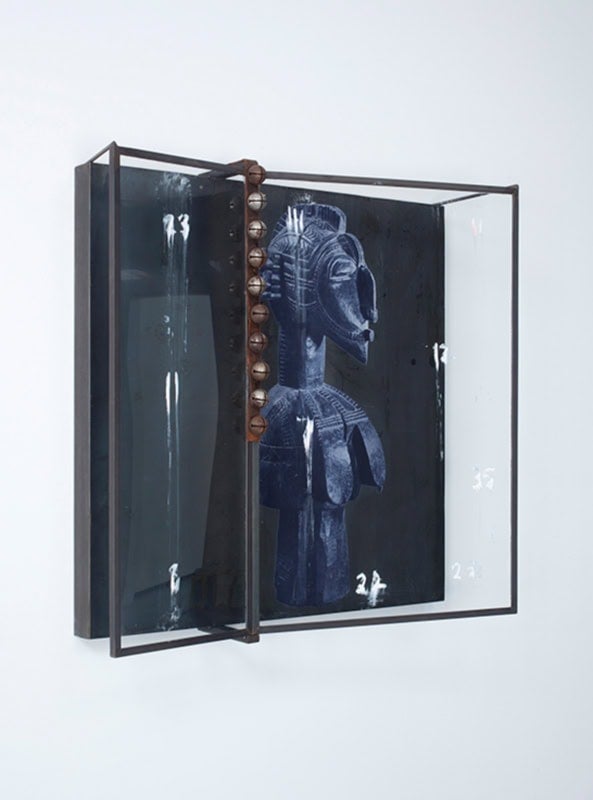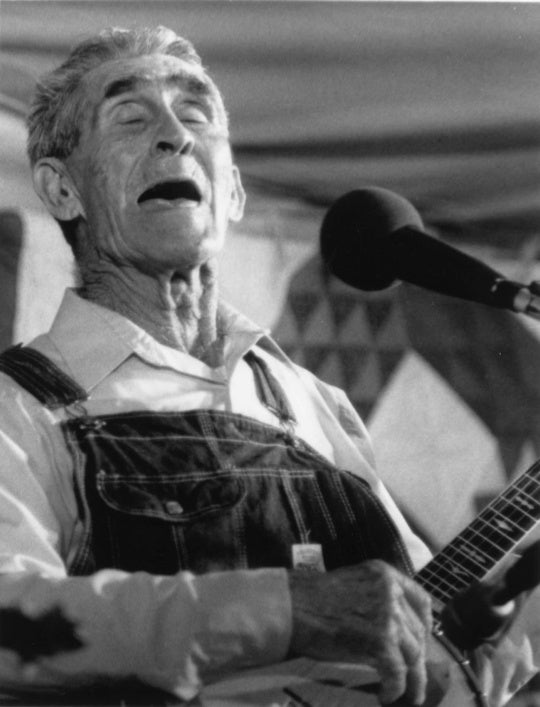
Distance — in time, place, and space — is paramount in Radcliffe Bailey’s work. The sculptures and works on paper at Boston’s Samsøn Projects, on view through May 28, are situated a good distance from each other, the space between each suggestive of the vast histories of places and peoples presented in the works themselves. In this sparse but potent presentation of the Atlanta artist’s recent work, we see his continued exploration of the African Diaspora and African-American experience, and his use of mystery and mysticism to consider displacement, detachment, and distance.
A small sculpture, Top Hat (2014), anchors the installation. An upturned, velvety black top hat, lined with rabbit fur and accented by a bright red rooster feather, Top Hat is as enigmatic as it is familiar. Though it’s overturned, the object is immediately recognizable as a fashion popular from the antebellum, slave-holding past, and known to us today primarily through history books. We are instinctively drawn to the work, beckoned to peer into the object’s interior and down an axiomatic rabbit hole. Here, Top Hat is suggestive of Loa spirits, the Haitian Vodou beings believed to exist between God and humans. Top Hat particularly evokes Baron Samedi and Papa Ghede, spirits who counteract each other as they watch over the living. While Baron Samedi is a rapscallion and Papa Ghede is a protector, both are known to don the high hat. That two binary mystics are evoked through one object fashionable during the Civil War era demonstrates how the past intermingles in the present.

On the gallery’s right wall is Blue Black Blue Cool (2016), a clear glass form shaped like the human heart. Indigo ink seeps out from its bottom, runs down the wall, and pools on the gallery floor. Blue Black Blue Cool is the latest of Bailey’s sculptures depicting this most vital of organs in blue materials, and sustains his focus on how people are connected through waterways, bloodlines, or culture, like blues music. Stoic and graceful, the work is activated entirely by its context, as the walls and floors direct the flow of the blue fluid. The ink puddles onto the delta of the floor, drying in veiny arrangements that recall aerial images of a river.
Blue Black Blue Cool is placed several beats away from another glass work, Currency (2011), consisting of a photographed African sculpture on steel encircled by loosely painted, almost obscured, numbers and a string of jingle bells. The bells are still and silent, dividing the composition into two not quite equal parts. Believed by Sierra Leone’s Mende people to be audible both on earth and in the cosmos, the jingle bells suggest the divide between this world and the next. The bells are also a link to Bailey’s distant ancestors: through DNA, he discovered that his distant maternal ancestors were taken from Sierra Leone.
The idea of bondage, and specifically African and African-American bondage is especially present in Fourth Ward (2013), a heavy wooden door gold-leafed on one side and painted white on the other. The gold-leafed side is adorned with a hefty iron deadbolt — a vintage Dogon lock — while the white side is decorated with three intertwined necklaces fashioned from root beer bottle caps. The door itself suggests barriers and crossing them. The whitewashed portion of the work is fitted with weak, broken chain locks that contrast with the strong, iron Dogon lock on the opposite side, suggesting the powerlessness of the poor as well as the strength of barriers that keep them from ascending in wealth. And as we cross from the whitewash into gold, our roots — implied through the root beer caps — our origins are always with us.

Fourth Ward stands between Currency and the works on paper in the show, each from the series Notes from Tervuren (2013). Sheets of music that have been collaged and painted on with expressive, colorful lines, Notes from Tervuren inserts African imagery within abstraction in both painting and music. Referring to the Royal Museum of Central Africa in Brussels, these works depict African culture in various stages of voyage away from their origins. One work includes a sculpture on a small boat alone on waves of blue, green, and yellow. Another encloses a single head against the outline of the moon and undulating bands of color. Notes isolates and decontextualizes the depicted objects, emphasizing both the theft and influence of African cultural patrimony. Though we are morally and temporally distant from the slavers who kidnapped and imprisoned Africans, are we still complicit?
Binding the old with the new, the African with the European, and the celestial with the physical, Bailey loads ordinary objects and images with arcane symbols to be decoded as we view his work. Through our discoveries, Bailey leads us through the discordant space of history and time so that we can trace our individual roots stretching from the vast collective past to our shared present.




